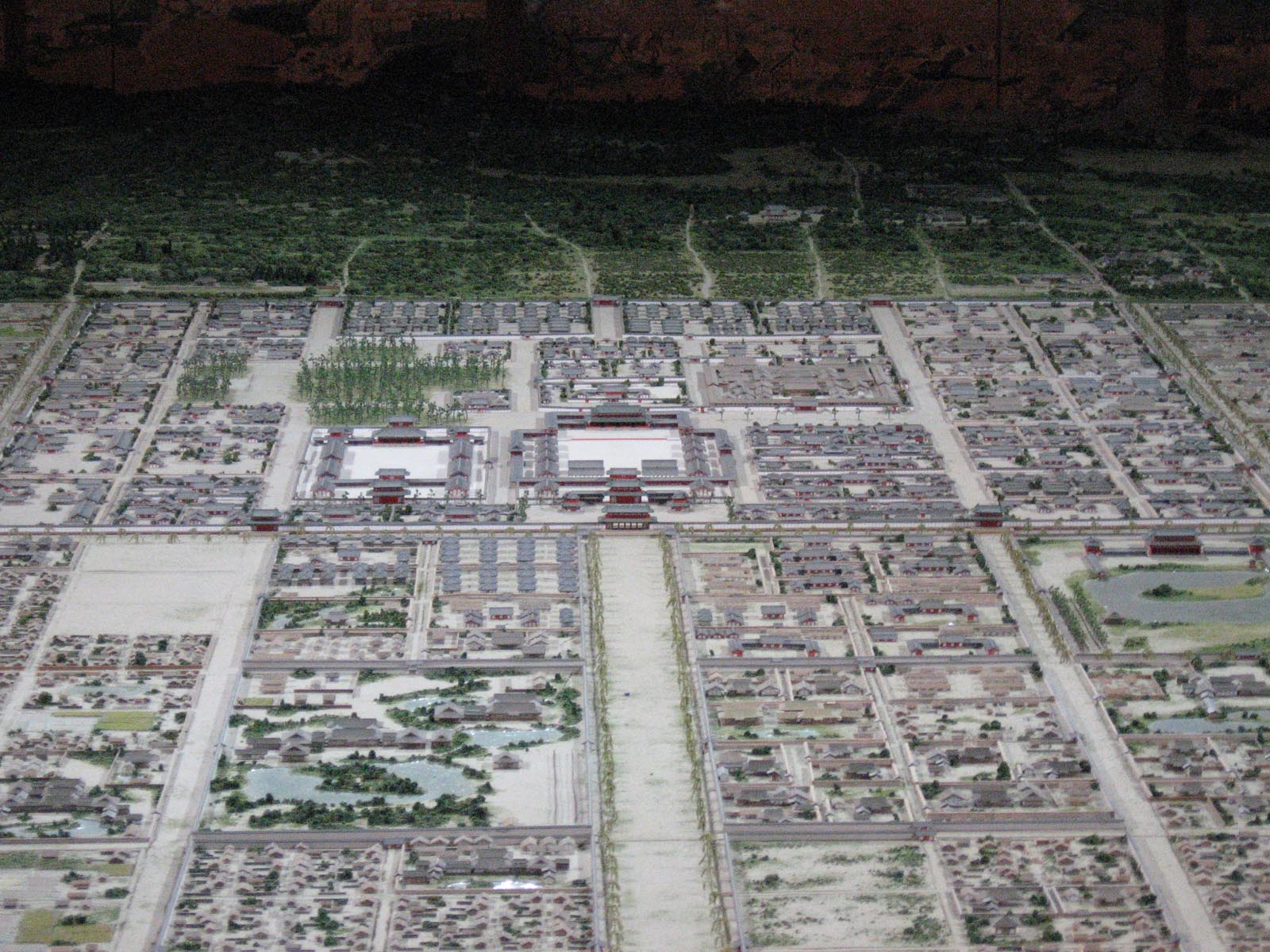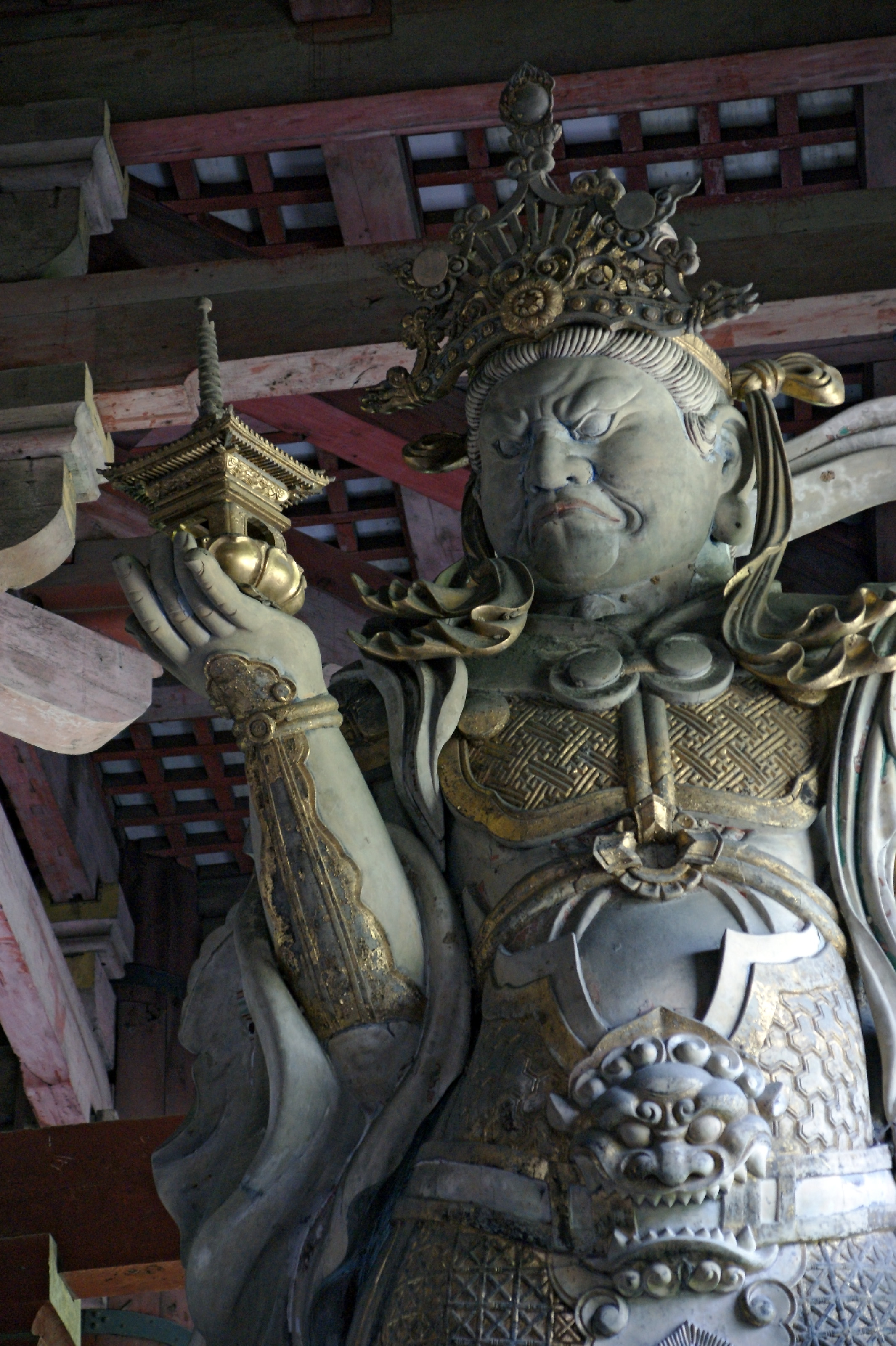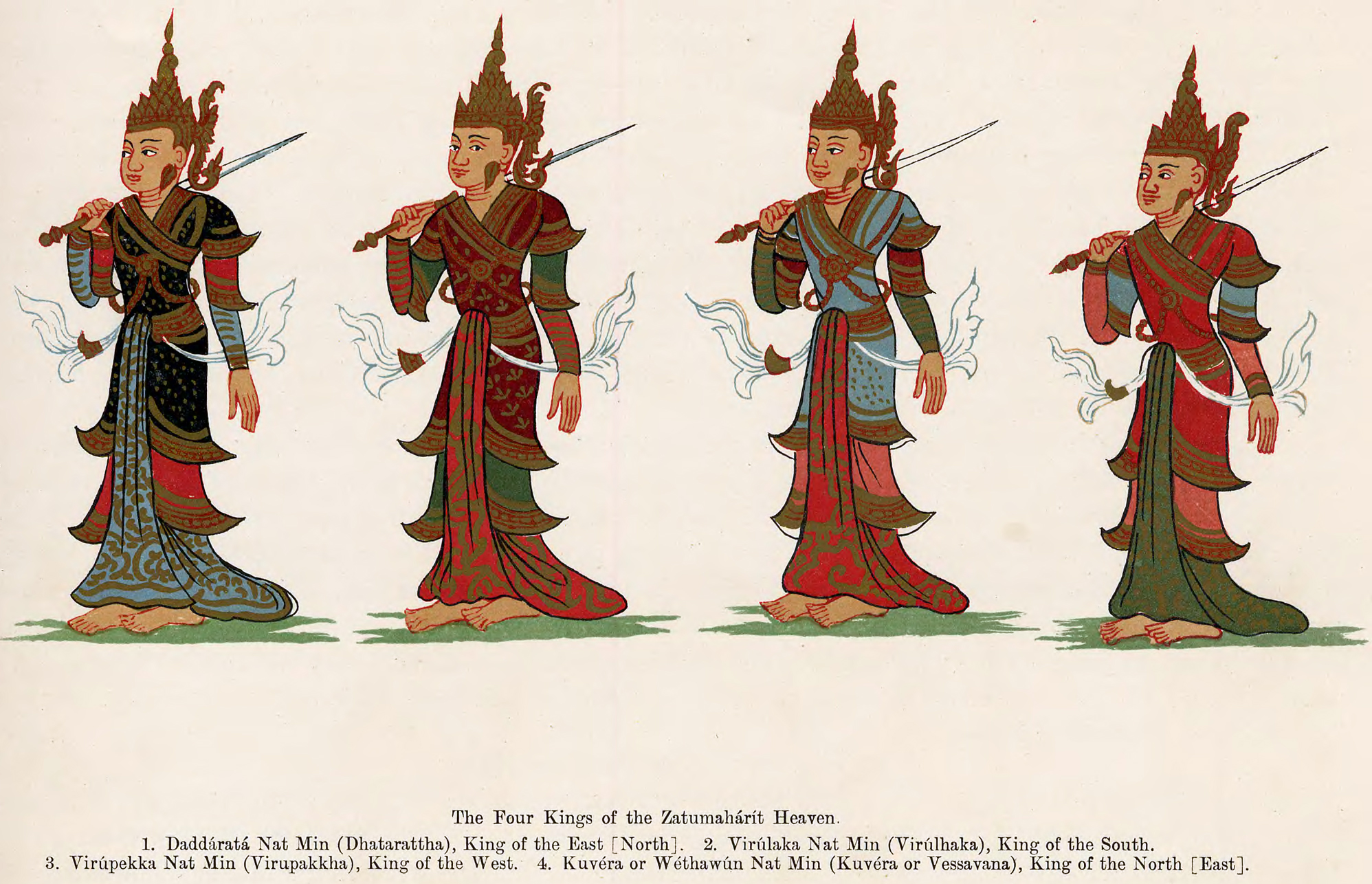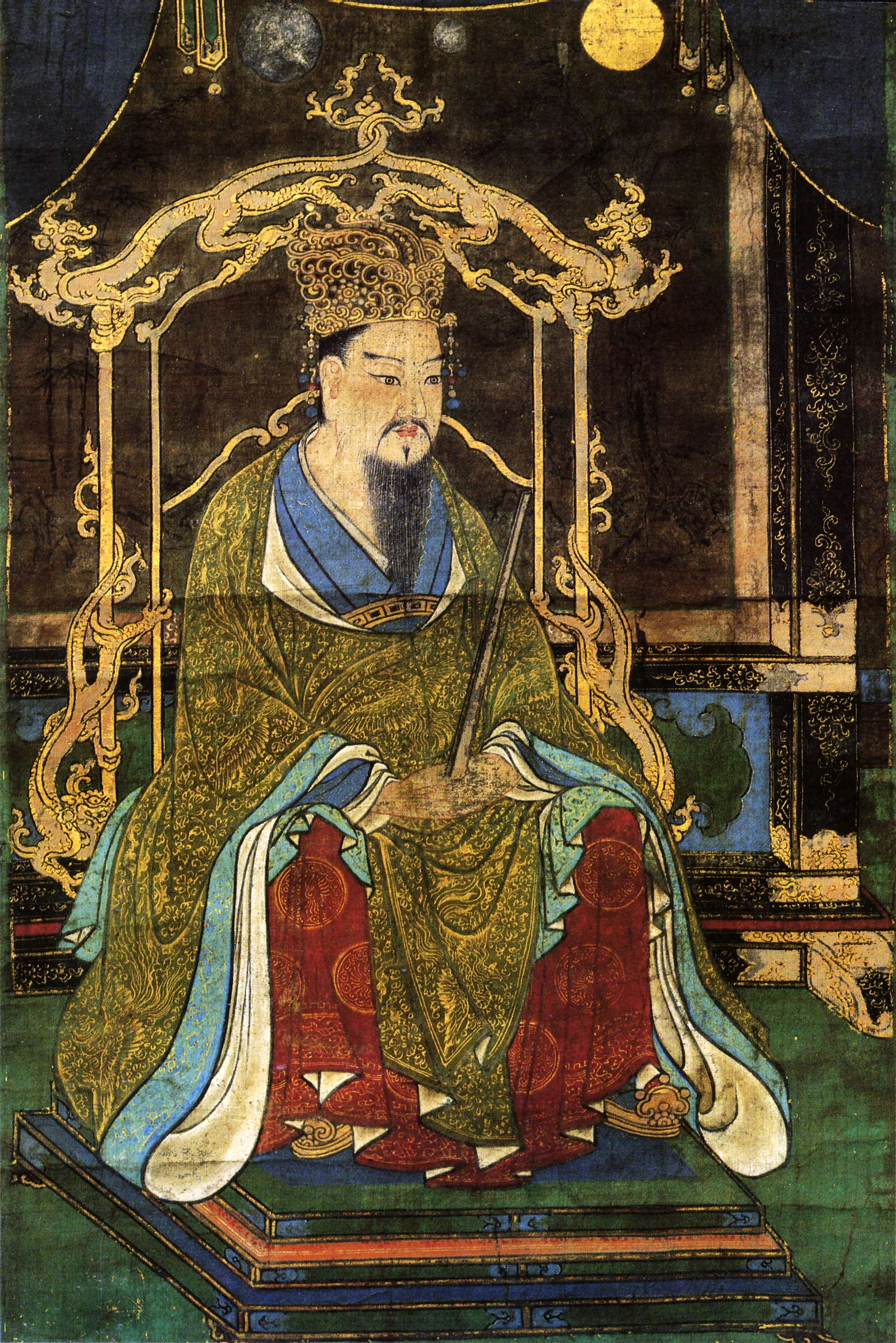|
Kai Doh Maru
is an original video animation (OVA) anime directed by Kanji Wakabayashi and produced by Production I.G. and SME Visual Works. It was released on December 19, 2001 in Japan and on July 29, 2003 in the United States by Manga Entertainment. In Australia, it is distributed on DVD by Madman Entertainment. Plot Set in the Shōryaku and Chōtoku eras of Japan's Heian period, ''Kai Doh Maru'' is set against a background of a capital under threat from disease, outlaws, and political plots. The story reworks themes from Japanese folklore, focusing on the relationship between Sakata no Kintoki (Kintarō) and Minamoto no Raikō, one of the first military Minamoto and "monster hunters" of folklore. The story replaces the traditional image of Kintaro - a strong, ruddy-cheeked man - with that of a determined, tomboyish girl, while retaining much of the traditional character such as the carrying of an axe. Other historical figures from the period who have also become objects of folklore, suc ... [...More Info...] [...Related Items...] OR: [Wikipedia] [Google] [Baidu] |
Katsuji Morishita
is a Japanese animation producer for Production I.G. He was responsible for overseeing the hand-drawn anime sequences in ''Kill Bill Volume 1''. Morishita also produced an anime by the name of ''Dead Leaves''. Currently, he's expected to be president of new I.G Port animation subsidiary, SIGNAL.MD was a Japanese animation studio founded on October 1, 2014 by Production I.G holding company IG Port. Establishment On September 22, 2014, IG Port announced it was forming a new animation studio named SIGNAL.MD. Production I.G board member Kats .... References External links * Japanese animators Japanese animated film producers Living people Year of birth missing (living people) {{animator-stub ... [...More Info...] [...Related Items...] OR: [Wikipedia] [Google] [Baidu] |
Fujiwara No Michinaga
was a Japanese statesman. The Fujiwara clan's control over Japan and its politics reached its zenith under his leadership. Early life Michinaga was born in Kyōto, the son of Kaneie. Kaneie had become Regent in 986, holding the position until the end of his life in 990. Due to the hereditary principle of the Fujiwara Regents, Michinaga was now in line to become Regent after his brothers, Michitaka and Michikane. Career Struggle with Korechika Michitaka was regent from 990 until 995, when he died. Michikane then succeeded him, famously ruling as Regent for only seven days before he too died of disease. With his two elder brothers dead, Michinaga then struggled with Fujiwara no Korechika, Michitaka's eldest son and the successor he had named. The mother of Ichijo, Fujiwara no Senshi, coerced Ichijo into granting Michinaga the title of Nairan (内覧) in the fifth month of 995. Korechika's position was ruined by a scandal that took place the following year, likely arranged ... [...More Info...] [...Related Items...] OR: [Wikipedia] [Google] [Baidu] |
Drama Anime And Manga
Drama is the specific mode of fiction represented in performance: a play, opera, mime, ballet, etc., performed in a theatre, or on radio or television.Elam (1980, 98). Considered as a genre of poetry in general, the dramatic mode has been contrasted with the epic and the lyrical modes ever since Aristotle's '' Poetics'' ()—the earliest work of dramatic theory. The term "drama" comes from a Greek word meaning "deed" or " act" (Classical Greek: , ''drâma''), which is derived from "I do" (Classical Greek: , ''dráō''). The two masks associated with drama represent the traditional generic division between comedy and tragedy. In English (as was the analogous case in many other European languages), the word '' play'' or ''game'' (translating the Anglo-Saxon ''pleġan'' or Latin ''ludus'') was the standard term for dramas until William Shakespeare's time—just as its creator was a ''play-maker'' rather than a ''dramatist'' and the building was a ''play-house'' rather t ... [...More Info...] [...Related Items...] OR: [Wikipedia] [Google] [Baidu] |
2001 Anime OVAs
1 (one, unit, unity) is a number, numeral, and glyph. It is the first and smallest positive integer of the infinite sequence of natural numbers. This fundamental property has led to its unique uses in other fields, ranging from science to sports, where it commonly denotes the first, leading, or top thing in a group. 1 is the unit of counting or measurement, a determiner for singular nouns, and a gender-neutral pronoun. Historically, the representation of 1 evolved from ancient Sumerian and Babylonian symbols to the modern Arabic numeral. In mathematics, 1 is the multiplicative identity, meaning that any number multiplied by 1 equals the same number. 1 is by convention not considered a prime number. In digital technology, 1 represents the "on" state in binary code, the foundation of computing. Philosophically, 1 symbolizes the ultimate reality or source of existence in various traditions. In mathematics The number 1 is the first natural number after 0. Each natural number, ... [...More Info...] [...Related Items...] OR: [Wikipedia] [Google] [Baidu] |
Heian-kyō
Heian-kyō was one of several former names for the city now known as Kyoto. It was the official capital of Japan for over one thousand years, from 794 to 1868 with an interruption in 1180. Emperor Kanmu established it as the capital in 794, moving the Imperial Court there from nearby Nagaoka-kyō at the recommendation of his advisor Wake no Kiyomaro and marking the beginning of the Heian period of Japanese history. According to modern scholarship, the city is thought to have been modelled after the urban planning for the Tang dynasty Chinese capital of Chang'an (modern-day Xi'an). It remained the chief political center until 1185, when the samurai Minamoto clan defeated the Taira clan in the Genpei War, moving administration of national affairs to Kamakura and establishing the Kamakura shogunate. Though political power would be wielded by the samurai class over the course of three different shogunates, Heian-kyō remained the site of the Imperial Court and seat of Imperi ... [...More Info...] [...Related Items...] OR: [Wikipedia] [Google] [Baidu] |
Oni (folklore)
An ( ) is a kind of ''yōkai'', demon, orc, ogre, or troll in Japanese folklore. They are believed to live in caves or deep in the mountains or in hell. Oni are known for their superhuman strength and have been associated with powers like thunder and lightning, along with their evil nature manifesting in their propensity for murder and cannibalism. They are typically portrayed as hulking figures with one or more horns growing out of their heads, massive teeth, and occasionally a third eye in the center of the forehead."Oni." ''Handbook of Japanese Mythology'', by Michael Ashkenazi, ABC-CLIO, 2003, pp. 230–233. They are typically depicted with red, blue, black, or yellow colored skin, wearing loincloths of tiger pelt, and carrying iron kanabō clubs. They also have three to six digits on each hand and foot tipped with claw-like nails. Oni are able to change their looks to fool their victims into trusting them. Oni can be male or female, but have been predominantly male through ... [...More Info...] [...Related Items...] OR: [Wikipedia] [Google] [Baidu] |
Shitennō (samurai)
The Four Heavenly Kings are four Buddhist gods or ''devas'', each of whom is believed to watch over one cardinal direction of the world. The Hall of Four Heavenly Kings is a standard component of Chinese Buddhist temples. Names The Kings are collectively named as follows: Individually, they have different names and features. File:Guardian of Phra Meru Mas of Bhumibol Adulyadej - Vessavana (right side).jpg, Vaiśravaṇa of the north direction, king of yakṣas. File:Guardian of Phra Meru Mas of Bhumibol Adulyadej - Virulhaka (right side).jpg, Virūḍhaka of the south direction, king of kumbhāṇḍas. File:Guardian of Phra Meru Mas of Bhumibol Adulyadej - Dhatarattha (left side).jpg, Dhṛtarāṣṭra of the east direction, king of gandharvas. File:Guardian of Phra Meru Mas of Bhumibol Adulyadej - Virupakkha (left side).jpg, Virūpākṣa of the west direction, king of nāgas. Mythology All four Kings serve Śakra (Buddhism), , the lord of the devas of . On the 8th ... [...More Info...] [...Related Items...] OR: [Wikipedia] [Google] [Baidu] |
Four Heavenly Kings
The Four Heavenly Kings are four Buddhism, Buddhist gods or Deva (Buddhism), ''devas'', each of whom is believed to watch over one cardinal direction of the world. The Hall of Four Heavenly Kings is a standard component of Chinese Buddhism, Chinese Buddhist Buddhist temple, temples. Names The Kings are collectively named as follows: Individually, they have different names and features. File:Guardian of Phra Meru Mas of Bhumibol Adulyadej - Vessavana (right side).jpg, Vaiśravaṇa of the north direction, king of yakṣas. File:Guardian of Phra Meru Mas of Bhumibol Adulyadej - Virulhaka (right side).jpg, Virūḍhaka of the south direction, king of kumbhāṇḍas. File:Guardian of Phra Meru Mas of Bhumibol Adulyadej - Dhatarattha (left side).jpg, Dhṛtarāṣṭra of the east direction, king of gandharvas. File:Guardian of Phra Meru Mas of Bhumibol Adulyadej - Virupakkha (left side).jpg, Virūpākṣa of the west direction, king of nāgas. Mythology All four Kings ser ... [...More Info...] [...Related Items...] OR: [Wikipedia] [Google] [Baidu] |
Sagami Province
was a Provinces of Japan, province of Japan located in what is today the central and western Kanagawa Prefecture.Louis-Frédéric, Nussbaum, Louis-Frédéric. (2005). "''Kanagawa''" at . Sagami Province bordered the provinces of Izu Province, Izu, Musashi Province, Musashi, and Suruga Province, Suruga. It had access to the Pacific Ocean through Sagami Bay. However, most of the present-day cities of Yokohama and Kawasaki, Kanagawa, Kawasaki, now part of Kanagawa Prefecture, were not in Sagami, but rather, in Musashi Province. Its abbreviated form name was . History Sagami was one of the original provinces of Japan established in the Nara period under the Taihō Code. The area has been inhabited since prehistoric times. Although remnants from the Japanese Paleolithic and Yayoi periods are scarce, remains from the Jōmon period are relatively plentiful. Kofun period remains are generally from the 1st to the 4th century AD. Whether or not Sagami was originally part of Musashi prior ... [...More Info...] [...Related Items...] OR: [Wikipedia] [Google] [Baidu] |
Mount Ashigara
Mount Ashigara (足柄山), also known as Mount Kintoki (金時山), is the northernmost peak of the Mount Hakone, Hakone caldera, on the border of Kanagawa Prefecture, Kanagawa and Shizuoka Prefecture, Shizuoka prefectures, in the Fuji-Hakone-Izu National Park in Japan. Ashigara is not a remnant of the collapse of the old Hakone volcano itself, but rather a parasitic cone growing from its flank. Mount Ashigara is the legendary birthplace of Kintarō. Etymology The kanji of the mountain's name mean "Leg Handle Mountain", but the written form is ''ateji'', meaning that the kanji were applied phonetically, and not for any symbolic representation of the mountain's characteristics or history. In old songs it is spelled out phonetically as ''asigari'' (阿之賀利) or ''asigara'' (安思我良). Access Hakone, Kanagawa, Hakone side * 90 minutes' walk from Sengokuhara, Sengoku bus stop Gotemba, Shizuoka, Gotemba side * 120 minutes' walk from Otome Toge bus stop Minamiashigara, Ka ... [...More Info...] [...Related Items...] OR: [Wikipedia] [Google] [Baidu] |
Taira No Masakado
was a Heian period provincial magnate (''gōzoku'') and samurai based in eastern Japan, notable for leading the first recorded uprising against the central government in Kyōto. Along with Sugawara no Michizane and Emperor Sutoku, he is often called one of the “.”. Early life Masakado was one of the sons of Taira no Yoshimasa (平良将), also known as Taira no Yoshimochi (平良持), of the Kanmu Taira clan (''Kanmu Heishi''), descendants of Emperor Kanmu (reigned 781–806) who were demoted from princely to commoner status and granted the Taira surname. Yoshimochi was one of the sons of Prince Takamochi, a grandson or great-grandson of Kanmu who was appointed the vice-governor of Kazusa Province (modern central Chiba Prefecture) in 889 ( Kanpyō 1). Takamochi's sons who joined him there occupied a variety of provincial offices in the eastern part of the country such as that of '' chinjufu shōgun'', the commander-in-chief of the defense garrison (''chinjufu'') i ... [...More Info...] [...Related Items...] OR: [Wikipedia] [Google] [Baidu] |
Minamoto Clan
was a Aristocracy (class), noble surname bestowed by the Emperors of Japan upon members of the Imperial House of Japan, imperial family who were excluded from the List of emperors of Japan, line of succession and demoted into the ranks of Nobility, the nobility since 814."...the Minamoto (1192-1333)". ''Warrior Rule in Japan'', page 11. Cambridge University Press. Several noble lines were bestowed the surname, the most notable of which was the Seiwa Genji, whose descendants established the Kamakura shogunate, Kamakura and Ashikaga shogunate, Ashikaga Shogun, shogunates following the Heian era. The Minamoto was one of the four great Japanese clans, clans that dominated Japanese politics during the Heian period, Heian period in History of Japan, Japanese history—the other three were the Fujiwara clan, Fujiwara, the Taira clan, Taira, and the Tachibana clan (kuge), Tachibana. In the late Heian period, Minamoto rivalry with the Taira culminated in the Genpei War (1180–1185 AD). T ... [...More Info...] [...Related Items...] OR: [Wikipedia] [Google] [Baidu] |








